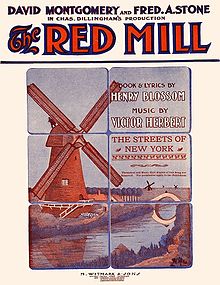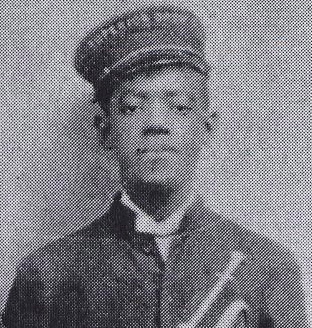
Willie Gary "Bunk" Johnson was an American prominent jazz trumpeter in New Orleans. Johnson gave the year of his birth as 1879, although there is speculation that he may have been younger by as much as a decade. Johnson stated on his 1937 application for Social Security that he was born on December 27, 1889. Many jazz historians believe this date of birth to be the most accurate of the various dates Johnson gave throughout his life.
RCA Records is an American record label owned by Sony Music Entertainment, a subsidiary of Sony Corporation of America. It is one of Sony Music's four flagship labels, alongside RCA's former long-time rival Columbia Records; also Arista Records, and Epic Records. The label has released multiple genres of music, including pop, classical, rock, hip hop, afrobeat, electronic, R&B, blues, jazz, and country. Its name is derived from the initials of its defunct parent company, the Radio Corporation of America (RCA). RCA Records was fully acquired by Bertelsmann in 1987, making it a part of Bertelsmann Music Group (BMG) and became a part of Sony BMG Music Entertainment after the 2004 merger of BMG and Sony; it was acquired by the latter in 2008, after the dissolution of Sony/BMG and the restructuring of Sony Music. RCA Records is the corporate successor of the Victor Talking Machine Company, founded in 1901, making it the second-oldest record label in American history, after sister label Columbia Records, founded in 1889.

Victor August Herbert was an American composer, cellist and conductor of English and Irish ancestry and German training. Although Herbert enjoyed important careers as a cello soloist and conductor, he is best known for composing many successful operettas that premiered on Broadway from the 1890s to World War I. He was also prominent among the Tin Pan Alley composers and was later a founder of the American Society of Composers, Authors, and Publishers (ASCAP). A prolific composer, Herbert produced two operas, a cantata, 43 operettas, incidental music to 10 plays, 31 compositions for orchestra, nine band compositions, nine cello compositions, five violin compositions with piano or orchestra, 22 piano compositions and numerous songs, choral compositions and orchestrations of works by other composers, among other music.

Sweethearts is an operetta or musical play in two acts with music by Victor Herbert, lyrics by Robert B. Smith and book by Harry B. Smith and Fred de Gresac.
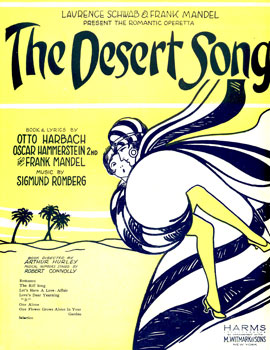
The Desert Song is an operetta with music by Sigmund Romberg and book and lyrics by Oscar Hammerstein II, Otto Harbach and Frank Mandel. It was inspired by the 1925 uprising of the Riffs, a group of Berber fighters, against French colonial rule in Morocco. It was also inspired by stories of Lawrence of Arabia aiding native guerrillas. Many tales romanticizing Saharan North Africa were in vogue, including Beau Geste and The Son of the Sheik.
A cast recording is a recording of a stage musical that is intended to document the songs as they were performed in the show and experienced by the audience. An original cast recording or OCR, as the name implies, features the voices of the show's original cast. A cast recording featuring the first cast to perform a musical in a particular venue is known, for example, as an "original Broadway cast recording" (OBCR) or an "original London cast recording" (OLCR).
The New Moon is an operetta with music by Sigmund Romberg and book and lyrics by Oscar Hammerstein II, Frank Mandel, and Laurence Schwab. The show was the third in a string of Broadway hits for Romberg written in the style of Viennese operetta. Set in 1792, shortly before the French Revolution, the story centers on a young French aristocrat in disguise, who has fled his country and falls in love with the daughter of a prominent New Orleans planter.
The Student Prince is an operetta in a prologue and four acts with music by Sigmund Romberg and book and lyrics by Dorothy Donnelly. It is based on Wilhelm Meyer-Förster's play Old Heidelberg. The piece has a score with some of Romberg's most enduring and beautiful tunes, including "Golden Days", "Drinking Song", "Deep in My Heart, Dear", "Just We Two" and "Serenade". The plot has elements of melodrama but lacks the swashbuckling style common to Romberg's other works.

Rose-Marie is an operetta-style musical with music by Rudolf Friml and Herbert Stothart, and book and lyrics by Otto Harbach and Oscar Hammerstein II. The story is set in the Canadian Rocky Mountains and concerns Rose-Marie La Flemme, a French Canadian girl who loves miner Jim Kenyon. When Jim falls under suspicion for murder, her brother Emile plans for Rose-Marie to marry Edward Hawley, a city man.
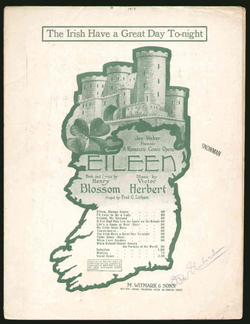
Eileen is a comic opera in 3 Acts with music by Victor Herbert and lyrics and book by Henry Blossom, based loosely on the 1835 novel Rory O'More by Herbert's grandfather, Samuel Lover. Set in 1798, the story concerns an Irish revolutionary arrested by the British for treason. Eileen, his nobly born sweetheart, helps him to escape by disguising him as a servant.
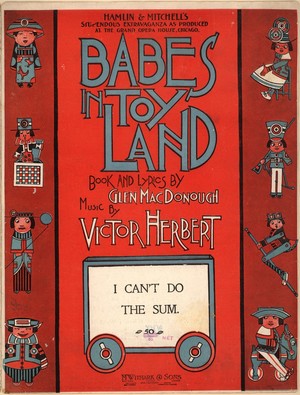
Babes in Toyland is an operetta composed by Victor Herbert with a libretto by Glen MacDonough, which wove together various characters from Mother Goose nursery rhymes into a musical extravaganza. Following the extraordinary success of their stage musical The Wizard of Oz, which was produced in New York beginning in January 1903, producer Fred R. Hamlin and director Julian Mitchell hoped to create more family musicals. MacDonough had helped Mitchell with revisions to the Oz libretto by L. Frank Baum. Mitchell and MacDonough persuaded Victor Herbert to join the production. Babes in Toyland features some of Herbert's most famous songs – among them "Toyland", "March of the Toys", "Go to Sleep, Slumber Deep", and "I Can't Do the Sum". The theme song "Toyland", and the most famous instrumental piece from the operetta, "March of the Toys", occasionally show up on Christmas compilations.

Naughty Marietta is an operetta in two acts, with libretto by Rida Johnson Young and music by Victor Herbert. Set in New Orleans in 1780, it tells how Captain Richard Warrington is commissioned to unmask and capture a notorious French pirate calling himself "Bras Pique" – and how he is helped and hindered by a high-spirited runaway, Contessa Marietta. The score includes many well-known songs, including "Ah! Sweet Mystery of Life".

Little Mary Sunshine is a musical that parodies old-fashioned operettas and musicals. The book, music, and lyrics are by Rick Besoyan. The original Off-Broadway production premiered November 18, 1959 at the Orpheum Theatre in New York City's East Village. Staying in the neighborhood, it moved to the Player's Theatre on June 21, 1961, then, finally, to the Cherry Lane Theatre on March 21, 1962. Closing was Sept. 2, 1962. Combined run was 1,143 performances. It was seen briefly in a West End production in 1962 and has become a popular show for amateur and semi-professional groups in the United States and elsewhere.
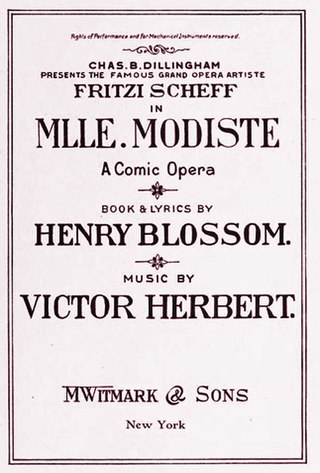
Mlle. Modiste is an operetta in two acts composed by Victor Herbert with a libretto by Henry Blossom. It concerns hat shop girl Fifi, who longs to be an opera singer, but who is such a good hat seller that her employer, Mme. Cecil, discourages her in her ambitions and exploits her commercial talents. Also, Fifi loves Etienne de Bouvray, who returns her love, but his uncle, Count Henri, opposes their union. The operetta features the song "Kiss Me Again".
The Ohio Light Opera is a professional opera company based in Wooster, Ohio that performs the light opera repertory, including Gilbert and Sullivan, American, British and continental operettas, and other musical theatre works, especially of the late 19th and early 20th centuries. The company is also known for its recordings of these works.

Richard Alexander Crooks was an American tenor and a leading singer at the New York Metropolitan Opera.
Charles Allan Gerhardt was an American conductor, record producer, and arranger.

The Red Mill is a 1927 American silent comedy film directed by Roscoe Arbuckle that starred Marion Davies and was produced by King Vidor. Although Arbuckle was acquitted in the third trial for the death of Virginia Rappe, he could not obtain work in Hollywood under his own name, so he adopted the pseudonym William Goodrich for directing the comedy shorts he made under his contract with Educational Film Exchanges.

Christmas Eve with Johnny Mathis is the fourth Christmas album by American pop singer Johnny Mathis that was released on September 23, 1986, by Columbia Records. This was Mathis's fourth holiday-themed LP and focused exclusively on secular material.
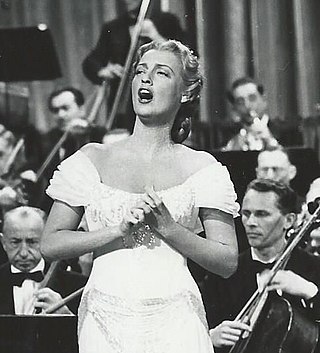
American actress/singer Jeanette MacDonald recorded over 50 songs during her film career for RCA Victor and its foreign counterparts. Due to the limited statistics released to the public, it is not certain how many songs and singles she has released or their exact popularity in music charts, although she has officially recorded eight studio albums and released seven compilation albums. Despite soundtracks for musical films not becoming a concept until the 1940s, many of her singles were re-recordings of songs she had performed in the movies ; her first "album" was the single "Dream Lover"/"March of the Grenadiers" (1930) on 78 rpm discs for The Love Parade. She also recorded a cover album of songs featured in Sigmund Romberg's Up in Central Park in 1945 with Robert Merrill, as well as non-English records during her 1931 European tour.
